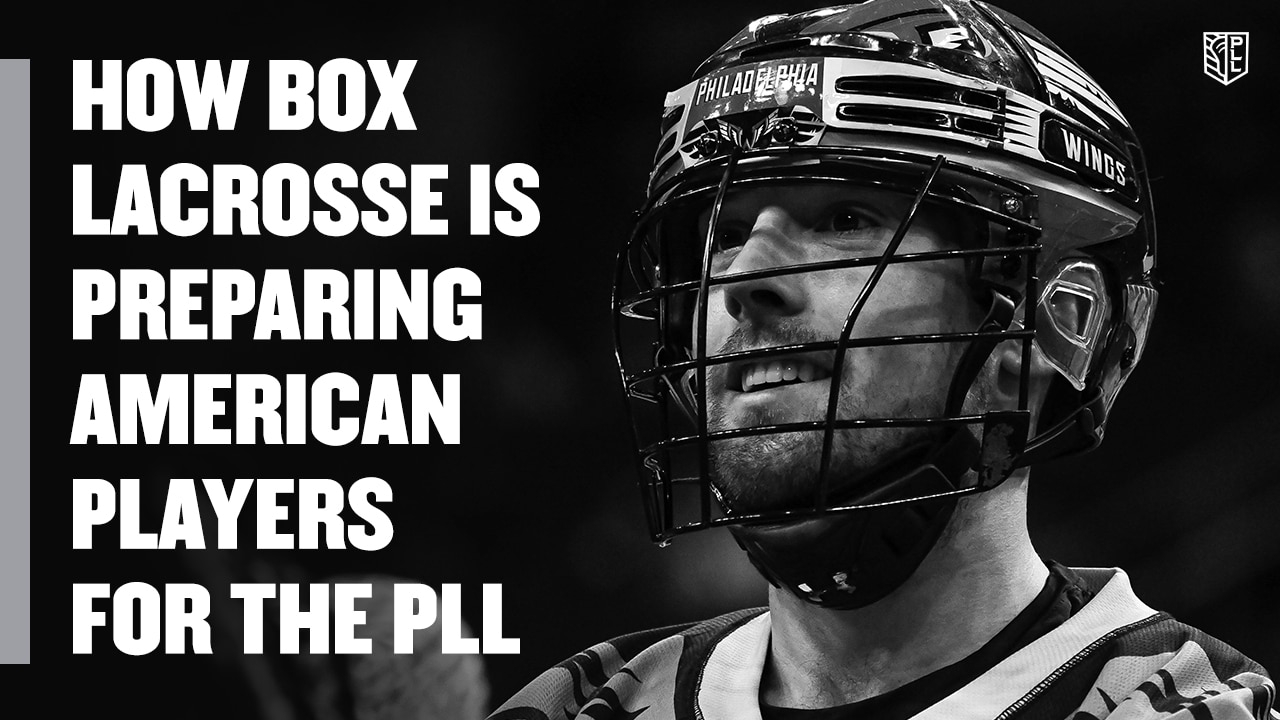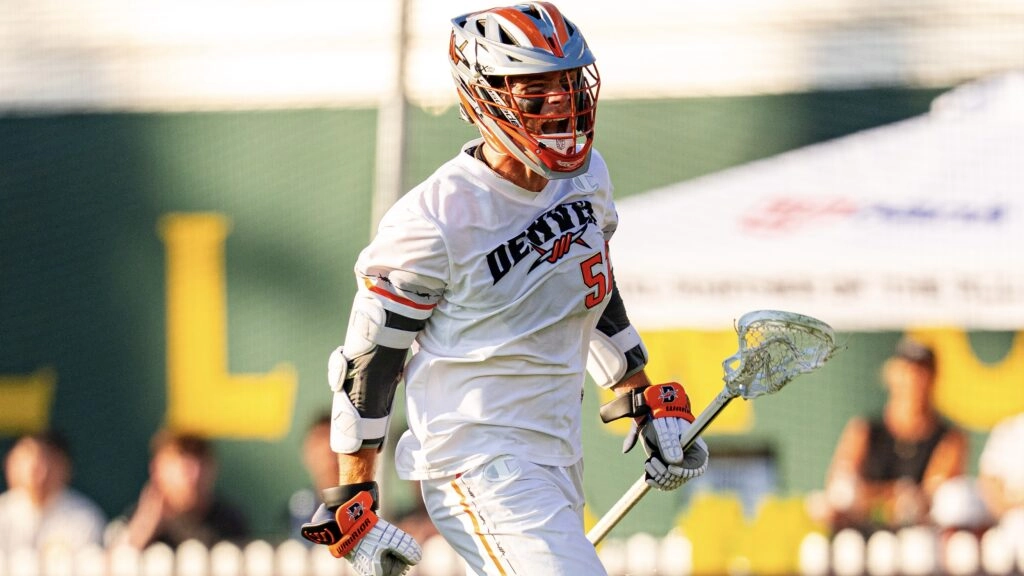Atlas LC defenseman Kyle Hartzell hadn’t suited up for a National Lacrosse League game since 2013 when Brodie Merrill texted him last month. The San Diego Seals captain -- along with his brother, Patrick, who is the head coach and general manager -- urged Hartzell to return to box lacrosse. A few days later, Hartzell was on the floor for the Seals matchup with the Toronto Rock.
“I’ve always had the itch to get back indoors,” said Hartzell, who won the 2010 NLL Cup with the Washington Stealth. “I respect Brodie so much as a player. Him shooting me a text made it pretty easy.”
Juggling coaching duties in Texas and professional field lacrosse had squeezed NLL out of Hartzell’s schedule for five years. This season, the timing made sense for a comeback: he’s living outside Los Angeles, training for the Premier Lacrosse League, and fired up to be competing for one of the top teams in the NLL.
Hartzell isn’t the only player for whom the stars have aligned. The recent NLL expansion and the PLL’s June 1st start date has opened the door for field-first players to explore box lacrosse. Of the 38 PLL players on NLL rosters this winter, 15 are first-year pros. Several of those rookies are Americans with very limited box lacrosse experience. The extra NLL roster spots and the later field lacrosse start date has given them the opportunity to play indoors.
“I played at the LASNAI tournament on the house team. That was the first time I really played box lacrosse,” said Whipsnakes LC attackman and San Diego Seals forward Jules Heningburg. Heningburg learned the game on the fly at LASNAI before attending the USA training combine where the national team’s coaches broke down floor spacing and off-ball play for the young Americans.
“When you’re off-ball, are you trying to set seals? Are you trying to re-pick? Are you trying to cut to the net? After you cut to the net, are you cycling back out? Where are you supposed to stand on the three-man side?”
Most professional players aren’t used to thinking through those questions on the field. These are the best of the best; they were asked to initiate in high school and college while their teammates played off-ball. There’s no better place to learn the nuances of off-ball play than in the box. Equipped with new skill sets, these players can be even more dynamic in PLL this summer.
“I’m excited to work on those two-man games and my cutting ability,” said Whipsnakes LC midfielder and San Diego Seals forward Connor Kelly. “The guys who play both box and then go play out in the field, they become such great cutters. That’s huge for a team, huge for an offense. It changes an offense from being good to great.”
Two-man games are becoming more popular in the field game; watch one 30-second possession and you might see a dozen on- and off-ball picks. Players may not be able to bring the brutal physicality of box picks to their field games, but the other skills translate.
“You’ve got picking in field, but it’s nothing like indoors,” said Hartzell. “It’s really similar to NBA basketball. There are a lot of moving picks. You just gotta be aware of what’s coming, see back picks, up picks, slip picks. Similar to field, it’s the guy off-ball -- your partner -- who is talking you through picks.”
“The number one difference is you don’t have to move a lot to get over the top or underneath to make the two-man game effective,” said Heningburg. “If you watch when I played at Rutgers, I’m going full tilt trying to sprint off a pick and then utilize whatever space the pick creates to get to the cage. [In box lacrosse], you learn how to set your man up when you have the ball.”
There’s a reason Heningburg and other outdoor players sprint through picks: Most field lacrosse defenders are wielding six-foot poles. Long-sticks decrease recovery time and increase the risk of a trail check. In box lacrosse every defender is playing with a short-stick. Being able to win matchups both ways is valuable. We’ve seen Heningburg win with speed; if he can win in a phonebooth, he’ll be an even tougher cover for defenses.
“You’re dealing with such a smaller window in the box game that if you see something, then you’ve got to be good enough to put it in the right spot and trust that he can catch and finish,” said Kelly. “You’re playing with the best players in the world in the PLL. Any guy can handle a pass or make the right pass. I’m excited to translate that.”
Some of the skills aren’t being learned, rather they’re being perfected. Take Whipsnakes LC attackman and Philadelphia Wings forward Matt Rambo’s physicality, for example. Growing up in Philadelphia, Rambo looked up to Wings legend Jake Bergey for his bruising dodging style. Now in the first year of the Wings’ return, young Philadelphians are idolizing Rambo.
“I’ve always been a super physical player,” said Rambo. “Box lacrosse has taught me how to use my body a lot differently. It’s going to help me a lot in the outdoor game.”
I asked Rambo how he has learned to leverage his physicality. Is he developing a Connor Fields-esque chicken wing move? Something else?
“I can’t give away my secrets,” Rambo laughed. “Just turning the corner harder.”
Every PLL team will benefit from having players gain box lacrosse experience. Each roster has at least four players suiting up in the NLL; the Chaos LC has 16 professional box lacrosse players. Learning new skills and perfecting old ones in NLL prepares players for the PLL season and vice versa. Even the best players in the world have taken their games to the next level in the box.
“I went up [to Toronto Rock training camp] with my field helmet. I had V’s in my stick and really didn’t know what I was doing,” recalled Schreiber. “I think that actually was somewhat helpful. Everything’s on fire, it’s either fail or learn. You can read a book on anything, but you’re not going to learn at an accelerated pace until you go and do it.”
The Rock reached out to the Americans in hopes of finding ball-carriers. The retirement of 9-time All-NLL forward Josh Sanderson and 2005 NLL MVP Colin Doyle -- coinciding with a season-ending injury to Rob Hellyer -- had left the team without initiating an presence.
“More times than not, these open spots on an offense in box lacrosse are for more of an off-ball guy, a really savvy indoor player,” said Schreiber. “No American is going to have that skill set from day one.”
Schreiber and McArdle were invited up north for their feeding; when they returned, they brought an improved finishing game with them through customs. Subtle shoulder fakes and snappy wrists have helped both become noticeably better cutters and scorers. Schreiber’s game-winning goal in the gold medal game against Canada can be credited to his improved hands and off-ball play learned in the box.
Without an overlap between the two leagues, we may see more PLL stars play NLL in the future. Whether they are returning to box lacrosse after a hiatus like Hartzell and Mike Manley -- or they are first-year NLL players like Heningburg, Kelly, Rambo, Guterding and Baptiste, -- the skills that they learn and polish are immediately translatable to the PLL field.





Pingback: gửi hàng đi mỹ
Pingback: microsoft exchange
Pingback: Creative Writing Online Are Good Or Scam?
Pingback: bettilt giris
Pingback: betflix
Pingback: https://thecopyrightcorner.org/2022/05/17/how-to-move-up-within-a-company-career-progression/
Pingback: sbobet
Pingback: สล็อตวอเลท ไม่มีขั้นต่ำ
Pingback: ytconvert
Pingback: benelli vinci
Pingback: dumps plus pin
Pingback: website
Pingback: source
Pingback: magic mushroom chocolates usa
Pingback: Best universities in Africa
Pingback: Aller voir
Pingback: First 2023 Larceny, Elijah Craig Barrel Proof Bourbons Arrive
Pingback: https://www.postandcourier.com/sponsored/phenq-reviews-does-this-diet-pill-actually-work/article_1cdbfb1a-395f-11ee-9d97-33c51303c959.html
Pingback: superkaya88
Pingback: click
Pingback: ks lumina pod
Pingback: fireplace sounds
Pingback: เชื่อมสแตนเลส
Pingback: faw99 สล็อต
Pingback: สมัคร สล็อตออนไลน์ LSM99
Pingback: naga356
Pingback: hfm ดีไหม
Pingback: inin
Pingback: ssr77
Pingback: b52club
Pingback: บุหรี่นอก
Pingback: เช่ารถตู้พร้อมคนขับ
Pingback: รับสมัครตัวแทนประกันรถยนต์
Pingback: Buy Magpul MBUS Gen 2 Front Back Up Iron Sight - BLACK Online
Pingback: บับเบิ้ลกันกระแทก
Pingback: เกมพนันใน LSM99DAY
Pingback: betflix allstar
Pingback: รับซื้อกระเป๋าแบรนด์